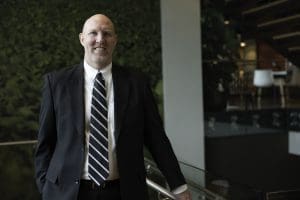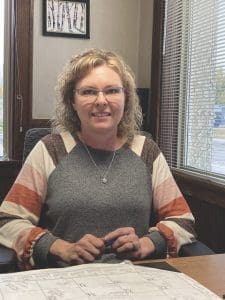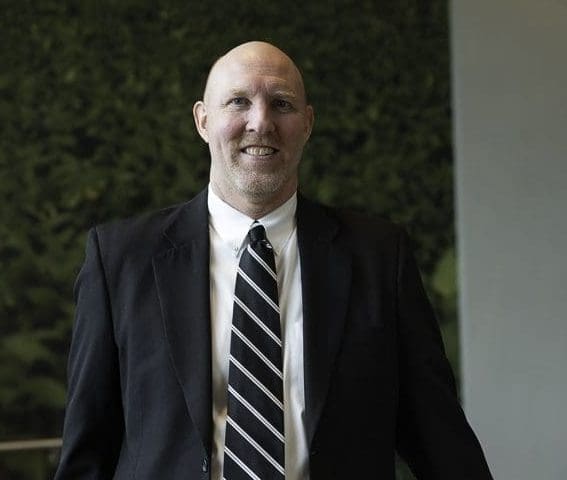By Patti Wilson Contributing Editor

The past year has provided fodder for the old Chinese salutation, “May you live in interesting times.”
The flood of money moving our way resulting from a historically low U.S. cattle inventory may seem a complete windfall on the surface. Realistically, it comes with a plethora of inflated expenses, labor shortages and money-management conundrums. Repercussions from tax obligations alone will no doubt cause many sleepless nights, and cattlemen everywhere have sharpened their pencils in an attempt to maximize this rare opportunity to set their finances right with the world.
A Visit With Rabobank
Shawn Smeins is the head of rural banking, North America, for Rabobank. It’s a big job that includes Canada, and it’s fair to say that Smeins keeps his finger on the pulse of agriculture. We spoke at length about the current financial situation, specifically with regard to beef cattle producers.
Smeins notes the many dynamics that entail our livelihood. Inflation, drought and skyrocketing prices for all classes of beef cattle are in the stewpot of factors. He particularly notes high feed costs, which have severely increased in 2023, as an ongoing dilemma.
Cow-calf producers are facing inflationary problems in record prices for pastureland and grass rent. He suggests that whatever your place is in the cattle industry, you’ve “got to find your niche and maximize every aspect of your operation.”
The Oct. 20, 2024, USDA Cattle on Feed Report showed a confusing, convoluted situation, with the 2023 calf crop being severely pulled forward. This leaves a vacuum for later feedlot placement. These numbers only add to the difficulty in planning for cattle feeders.
Smeins remains confident that demand for protein will not change. Although an eventual shift to pork and chicken by cost-weary consumers can happen, it has happened before and beef has rebounded. Consumer preferences are dynamic and other factors are at play, including disease outbreaks (avian influenza) in poultry flocks and politically motivated initiatives such as California’s Proposition 12. To this, Smeins asserts that poultry reproduce quickly, so flock numbers rebound quickly, too. Some states can cause “inflationary restrictions” with emotional rhetoric by establishing controversial regulations. Prop 12 is a result of such thinking, forcing pork producers to overhaul their facilities or go out of business.
“Folks don’t know what the repercussions are when decisions are emotional, not factual,” Smeins says. He notes that people sometimes make decisions in isolation, and inflationary prices will eventually catch up with these restrictions being imposed. Reality will set in that government overreach and regulations don’t work.
“Don’t look at short term, look at long term. It’s part of the cycle.” – Shawn Smeins
Good Advice
“Keep your liquidity strong!” Smeins exclaims. He emphasizes that upcoming cattle cycles will have higher highs and lower lows. Interest rates are not likely to decrease, which could be tough on young cattle producers. It is important to look forward, keeping current on repairs and maintenance to enable producers to weather the next cycle.
Smeins explains that stocker and feedlot operations must not stop buying pricey calves. “You cannot stop operating and stay in the game,” he says. “Startup is high. You have to have the right management in place and stay in.”
Smeins also states that it’s OK to pay taxes. It means you are profitable. He also recommends dollar-cost averaging.
“Don’t look at short term, look at long term,” he says. “It’s part of the cycle.” He emphasizes the importance of using contracts and establishing stable relationships.
An important tool in maintaining economic stability is the use of Livestock Risk Protection (LRP) backed up with traditional hedging. LRP alone may be sufficient for smaller producers.
“Hedging takes a strong cash position,” he says. “You must be able to navigate margin-call risk.” Fluctuations are severe in hedging and LRP provides greater stability. Rabobank does not require either LRP or hedging to protect cattle producers, although it is highly encouraged. Big operators, however, must be very liquid to attain an unprotected loan.
Smeins says large feedlots have an advantage in risk management. They employ personnel who specialize in financing and risk management. Small producers don’t necessarily have the same internal resources to manage and monitor risks.
“Protect yourself with consistency of management,” he advises.
Small Producers

On the flip side of large feeding operations and specialized units, farmer-stockmen and family ranchers abound in rural America. Collectively, their calves are the ones that ultimately fill the feedlots and the grocery shelves. According to the 2017 Agriculture Census, the average U.S. cow herd size is 44 head. Many cow-calf producers are farmers who graze their cattle on unfarmable areas of low-lying sloughs or rough topographic hills.
I spoke with Town and Country Bank loan officer Heather Paitz in Litchfield, Neb. She’s familiar with this rural demographic and her comments echo Smeins’. These herds do not make a large amount of money but are instrumental in building equity.
“Young farmers need to learn that money is not made every year,” Paitz explains. You must stay in business for the long haul, always gaining equity when keeping your nose above water. Then equity can be disbursed later in life at your discretion.
She recommends small and mid-sized producers upgrade equipment and facilities, cull older or marginal cows and replace them with heifers. Upgrade your bull genetics. In the long run, making improvements now can ensure your equipment, facilities and herd will be less expensive to maintain at the bottom of the cattle cycle. She even suggests home improvements like re-roofing your house or installing new windows.
Paitz notes that some bank loans are being paid off early, particularly those with higher interest rates. Agricultural banks are making an effort to keep interest rates reasonable, despite rate hikes coming down from the government. Currently, her bank is offering seed financing at a lower rate than seed dealers offer, so farmers can take advantage of interest savings.
An important factor to consider is the convenience of local banking. Paitz notes that farmers are comfortable dealing with a local bank that will tie all their business together, rather than financing items through a seed company or machinery dealership.
She encourages using LRP to insure calf crops, but many small to mid-sized operators are reluctant to jump into the program. However, she has seen the use of LRP expand in her area.
Finally, although land prices have skyrocketed, Paitz still considers land a good long-term investment. It is a great source of equity and offers solid collateral.
Options abound when economics permit. It offers great opportunity to shore up our resources and enables us to stay in business for the long haul.







